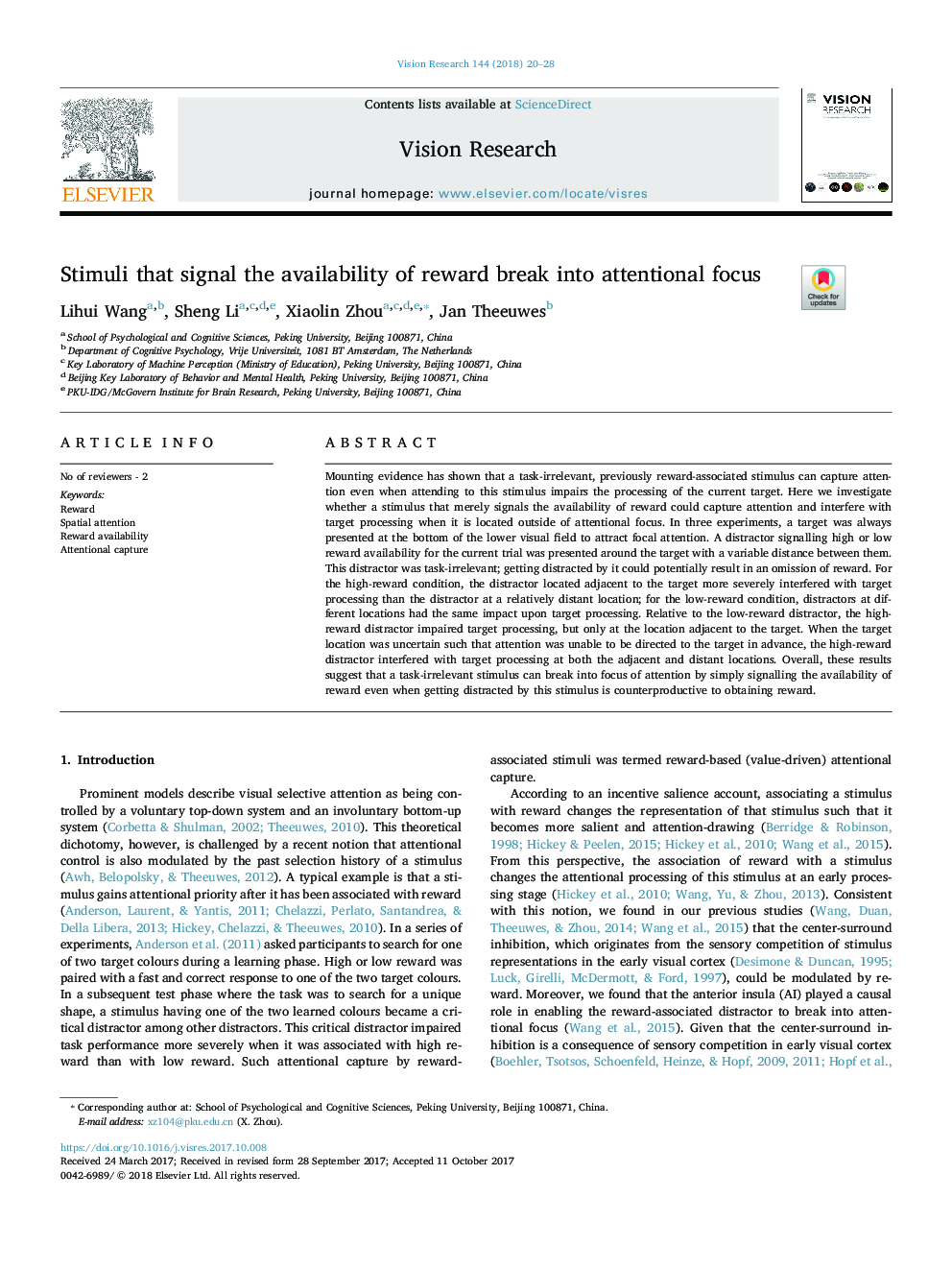| Article ID | Journal | Published Year | Pages | File Type |
|---|---|---|---|---|
| 8795317 | Vision Research | 2018 | 9 Pages |
Abstract
Mounting evidence has shown that a task-irrelevant, previously reward-associated stimulus can capture attention even when attending to this stimulus impairs the processing of the current target. Here we investigate whether a stimulus that merely signals the availability of reward could capture attention and interfere with target processing when it is located outside of attentional focus. In three experiments, a target was always presented at the bottom of the lower visual field to attract focal attention. A distractor signalling high or low reward availability for the current trial was presented around the target with a variable distance between them. This distractor was task-irrelevant; getting distracted by it could potentially result in an omission of reward. For the high-reward condition, the distractor located adjacent to the target more severely interfered with target processing than the distractor at a relatively distant location; for the low-reward condition, distractors at different locations had the same impact upon target processing. Relative to the low-reward distractor, the high-reward distractor impaired target processing, but only at the location adjacent to the target. When the target location was uncertain such that attention was unable to be directed to the target in advance, the high-reward distractor interfered with target processing at both the adjacent and distant locations. Overall, these results suggest that a task-irrelevant stimulus can break into focus of attention by simply signalling the availability of reward even when getting distracted by this stimulus is counterproductive to obtaining reward.
Related Topics
Life Sciences
Neuroscience
Sensory Systems
Authors
Lihui Wang, Sheng Li, Xiaolin Zhou, Jan Theeuwes,
